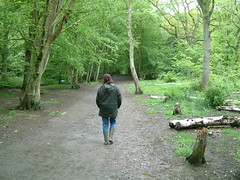
I have been trying to write this blog for months. Euthanasia is one topic that I am passionate about . I find it difficult to listen to debates on the news reports and want to jump in to say what is not being said. So here is my attempt to fill in the gaps.
Euthanasia is generally referred to in three different situations and there are two types called active and passive.
The Terminally Ill
The first situation involves a terminally ill patient who is actively dying. The two types of euthanasia are active and passive.
Active euthanasia is the act of taking someone’s life. Giving a person an overdose of morphine for instance is active euthanasia. Passive euthanasia is allowing nature to take its course. In a way, it is the choice not to act. It is passive euthanasia if for instance a terminally ill person chooses not to take antibiotics for a pneumonia developed at this time.
Palliative Care professionals will not provide active euthanasia. They will not kill their patients. It is their role most importantly to keep the patient comfortable. They no longer focus care on prolonging life but they do not focus care on hastening death. They focus all their measures on the patient’s comfort. This does not mean morphine is withheld if the patient is uncomfortable but breathing shallowly. It means all we do is for the patient's comfort and this is the focus of care.
On or Off a Respirator?
The second situation involves those who have often suffered a trauma that has caused irreparable damage affecting their quality of life. In this case it is easy to confuse active euthanasia with passive. Letting nature take its course is passive such as taking a brain dead person off a respirator or when a person refuses a feeding tube. There is a grey area here that is often hotly debated but it is important in debates to distinguish the difference between taking life (active) and allowing someone to die naturally (passive). Have you seen Million Dollar Baby? Just taking her off the respirator would have been passive euthanasia-she could not survive without it. Her body was irrevocably broken. Giving her the adrenalin to stop her heart when taking her off was active euthanasia.
Degenerative Illnesses
The third situation is the heart wrenching debate for active euthanasia when a person is not actively dying (within 6 months). This is the highly dangerous and ethically loaded debate to end ones life in anticipation of ones death. Basically the future looks bleak because of a terrible prognosis. It will be filled with suffering and a lack of control where you will become utterly dependent on those around you. And perhaps the greatest fear of all is that you will become a burden on those around you. To be faced with this future--hence the debate and why people go to Amsterdam and Switzerland.
I have been nursing cancer patients for 18 years and spent a good portion of that time in palliative care. The only thing I am sure about is that people die the way they live. That means simply that there is no right or wrong way to die. We all will face it as we have faced the challenges that come before it in our lives. You will choose how you die. You will choose how to cope with it or how to ignore it. If you face the hard times in life fighting than you will most likely fight death and all that seeks to take a moment of life away. If you face hardship with quiet resolve than often you will let go sooner rather than later. If you endure hardship and would rather not know than you may die denying death is coming.
I have had patients in my care who have committed suicide. That is what active euthanasia is about and I feel you must call it by its real name. As a health care professional I failed them. I could not reassure them enough or make them comfortable enough or confident enough that we would help them die with dignity. Their fears killed them or despair. It is tremendously sad. You see when people talk about the slippery slope this is what they mean. Fear, emotional and physical pain, dependence, and loss of control are all part of life and when we opt out early where does it stop? Should the incurable schizophrenic opt out? Should the grandpa who is paralyzed from a stroke and doesn't want to burden his family decide to commit suicide in a heroic act to spare them? Is that what his family would choose?
Our laws can protect us from making decisions that would disregard life. Our laws can protect vulnerable people. Those facing degenerative illness, the mentally ill, the old and the handicapped are the most vulnerable of all in society. Asking health professionals to take life will send us in a direction that I as a health care professional am not willing to follow. I think you should be very wary of those who will participate as who is to hold them back from the slippery slope. Ever see Last of the Mohegans when the elderly grandmother who can no longer contribute to the tribe goes into the night to freeze to death (it was considered the honourable thing-no one tried to talk her back in to the tepee). Times have changed. Our laws can help ensure we never feel the need to walk out alone into the cold to die. It will also ensure that others know we value their life and call them back in.




